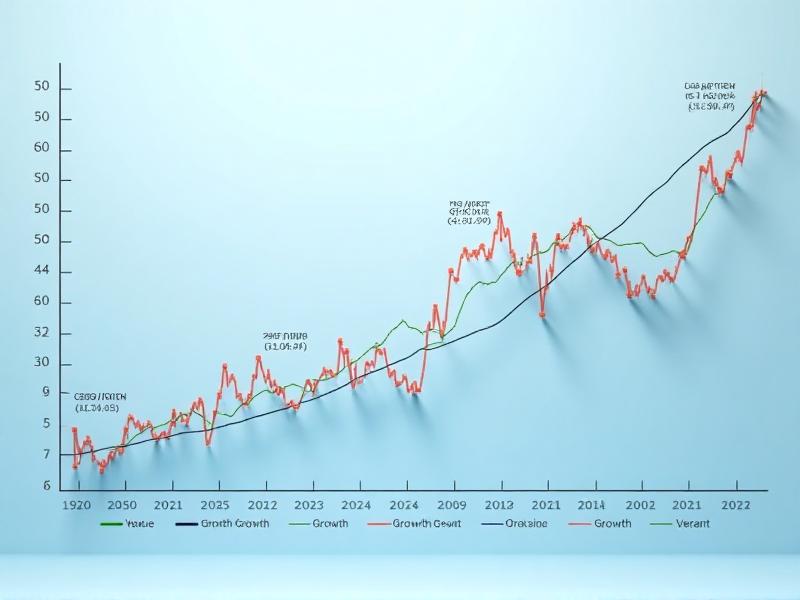
How to Invest in Bonds for Stability and Income

How Blockchain is Revolutionizing Finance

Unforgettable Pilgrimages: Top Temples in Andhra Pradesh

How to Use Options for Income Generation
How to Use ETFs for Environmental, Social, and Governance (ESG) Investing
Apr 24, 2025 By Juliana Daniel
Understanding ESG Investing and Its Importance
Environmental, Social, and Governance (ESG) investing has emerged as a powerful strategy for investors who want to align their portfolios with their values. ESG criteria evaluate companies based on their environmental impact, social responsibility, and governance practices. By focusing on these factors, investors can support businesses that prioritize sustainability, ethical practices, and transparency.
ESG investing is not just about doing good; it’s also about achieving long-term financial returns. Studies have shown that companies with strong ESG practices often outperform their peers in terms of profitability and risk management. This makes ESG investing a win-win for both investors and society.
Exchange-Traded Funds (ETFs) have become a popular vehicle for ESG investing. ETFs offer diversification, liquidity, and cost-effectiveness, making them an attractive option for both novice and experienced investors. By investing in ESG-focused ETFs, individuals can gain exposure to a broad range of companies that meet stringent ESG criteria without having to pick individual stocks.
What Are ESG ETFs and How Do They Work?
ESG ETFs are a type of exchange-traded fund that specifically targets companies with strong environmental, social, and governance practices. These ETFs are designed to provide investors with a diversified portfolio of stocks that meet predefined ESG criteria. The selection process for these ETFs often involves rigorous screening and scoring based on various ESG metrics.
One of the key advantages of ESG ETFs is their transparency. Most ESG ETFs disclose their holdings and the criteria used for selecting companies, allowing investors to make informed decisions. This transparency is crucial for investors who want to ensure that their investments align with their values.
Another benefit of ESG ETFs is their flexibility. They are traded on major stock exchanges, just like traditional ETFs, making them easy to buy and sell. This liquidity is particularly important for investors who want to adjust their portfolios quickly in response to changing market conditions or personal financial goals.
Key Benefits of Using ETFs for ESG Investing
One of the primary benefits of using ETFs for ESG investing is diversification. ESG ETFs typically hold a wide range of stocks across various sectors, reducing the risk associated with investing in individual companies. This diversification can help protect your portfolio from market volatility and sector-specific downturns.
Cost-effectiveness is another significant advantage. ETFs generally have lower expense ratios compared to mutual funds, making them a more affordable option for long-term investors. Additionally, the ability to trade ETFs like stocks means you can avoid some of the fees associated with buying and selling mutual funds.
ESG ETFs also offer accessibility. They are available on major stock exchanges, making them easy to purchase through most brokerage accounts. This accessibility allows investors of all experience levels to participate in ESG investing without needing specialized knowledge or resources.
How to Evaluate ESG ETFs: Key Metrics and Criteria
When evaluating ESG ETFs, it’s essential to consider the specific criteria used to select the companies included in the fund. Different ETFs may use varying methodologies, so understanding these criteria is crucial for ensuring that the ETF aligns with your values and investment goals.
One important metric to consider is the ESG score. This score is typically based on a company’s performance in areas such as carbon emissions, labor practices, and board diversity. Higher ESG scores generally indicate better alignment with sustainable and ethical practices.
Another factor to consider is the ETF’s exposure to controversial industries. Some ESG ETFs exclude companies involved in industries like tobacco, firearms, or fossil fuels. If avoiding these industries is important to you, make sure to check the ETF’s exclusion criteria.
Top ESG ETFs to Consider for Your Portfolio
There are numerous ESG ETFs available, each with its own focus and strategy. Some of the top ESG ETFs to consider include the iShares ESG Aware MSCI USA ETF (ESGU), the Vanguard ESG U.S. Stock ETF (ESGV), and the SPDR SSGA Gender Diversity Index ETF (SHE). These ETFs offer exposure to a broad range of companies that meet stringent ESG criteria.
The iShares ESG Aware MSCI USA ETF (ESGU) is one of the largest ESG ETFs, providing exposure to U.S. companies with strong ESG practices. It has a low expense ratio and offers broad diversification across various sectors.
The Vanguard ESG U.S. Stock ETF (ESGV) is another popular option, known for its low costs and comprehensive screening process. It excludes companies involved in controversial industries and focuses on those with strong ESG performance.
Strategies for Incorporating ESG ETFs into Your Investment Plan
Incorporating ESG ETFs into your investment plan requires careful consideration of your financial goals and risk tolerance. One strategy is to allocate a portion of your portfolio to ESG ETFs, gradually increasing your exposure as you become more comfortable with this approach.
Another strategy is to use ESG ETFs as a core holding in your portfolio. By doing so, you can ensure that a significant portion of your investments aligns with your values while still achieving diversification and risk management.
Rebalancing your portfolio periodically is also important. As market conditions change, the weight of ESG ETFs in your portfolio may shift. Regular rebalancing can help maintain your desired asset allocation and ensure that your investments continue to align with your values.
Challenges and Risks of ESG ETF Investing
While ESG ETFs offer numerous benefits, they are not without challenges and risks. One of the primary challenges is the lack of standardized ESG criteria. Different ETFs may use varying methodologies, making it difficult to compare them directly.
Another risk is the potential for greenwashing, where companies or funds exaggerate their ESG credentials to attract investors. To mitigate this risk, it’s essential to conduct thorough research and choose ETFs with transparent and rigorous screening processes.
Market volatility is another consideration. Like all investments, ESG ETFs are subject to market fluctuations. It’s important to maintain a long-term perspective and avoid making impulsive decisions based on short-term market movements.
The Future of ESG Investing and ETFs
The future of ESG investing looks promising, with growing interest from both individual and institutional investors. As awareness of environmental and social issues continues to rise, demand for ESG-focused investments is expected to increase.
Innovation in ESG ETFs is also likely to accelerate. New products may emerge that offer more targeted exposure to specific ESG themes, such as clean energy, gender diversity, or sustainable agriculture. These innovations will provide investors with even more options for aligning their portfolios with their values.
Regulatory developments may also play a role in shaping the future of ESG investing. Governments and regulatory bodies are increasingly recognizing the importance of ESG factors, which could lead to more standardized reporting requirements and greater transparency in the industry.
Practical Tips for Getting Started with ESG ETFs
If you’re new to ESG investing, getting started with ESG ETFs can seem daunting. However, with a few practical tips, you can navigate this space with confidence. First, educate yourself about ESG criteria and how they are applied in ETF selection. This knowledge will help you make informed decisions.
Next, assess your financial goals and risk tolerance. Understanding your investment objectives will guide your choice of ESG ETFs and help you build a portfolio that aligns with your values and financial needs.
Finally, consider consulting with a financial advisor who specializes in ESG investing. A professional can provide personalized advice and help you navigate the complexities of ESG ETFs, ensuring that your investments are both impactful and financially sound.

How to Use Budgeting Apps to Manage Your Money

The Benefits of Investing in High-Dividend Stocks

What Is A Planner For Retirement?

How to Invest in Real Estate Without Buying Property

How to Choose the Right Hostel: 6 Tips to Avoid Bad Stays

The Financial Benefits of a Digital Detox

How to Invest in Value Stocks for Long-Term Gains

How to Invest in Gold and Precious Metals
Advertisement
